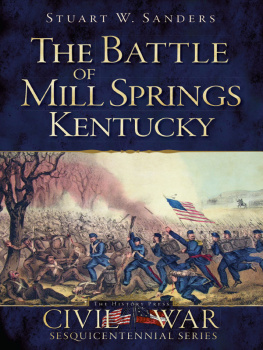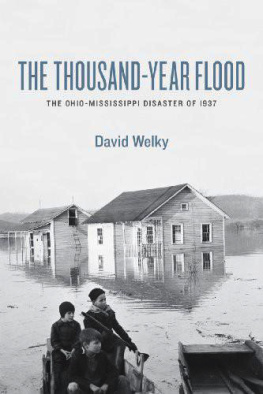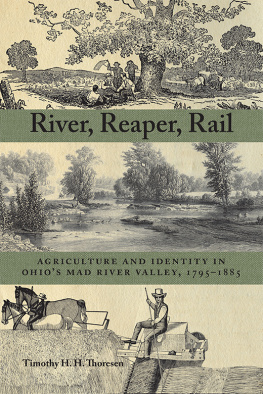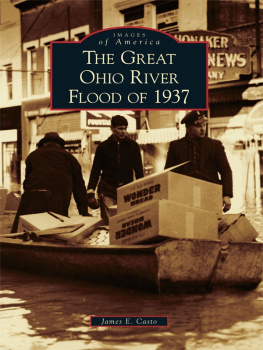MURDER ON THE OHIO BELLE
MURDER ON THE OHIO BELLE
Stuart W. Sanders

Due to variations in the technical specifications of different electronic reading devices, some elements of this ebook may not appear as they do in the print edition. Readers are encouraged to experiment with user settings for optimum results.
Copyright 2020 by The University Press of Kentucky
Scholarly publisher for the Commonwealth, serving Bellarmine University, Berea College, Centre College of Kentucky, Eastern Kentucky University, The Filson Historical Society, Georgetown College, Kentucky Historical Society, Kentucky State University, Morehead State University, Murray State University, Northern Kentucky University, Transylvania University, University of Kentucky, University of Louisville, and Western Kentucky University.
All rights reserved.
Editorial and Sales Offices: The University Press of Kentucky
663 South Limestone Street, Lexington, Kentucky 40508-4008
www.kentuckypress.com
Unless otherwise noted, photographs are courtesy of the Library of Congress.
Cataloging-in-Publication data is available from the Library of Congress.
ISBN 978-0-8131-7871-4 (hardcover : alk. paper)
ISBN 978-0-8131-7873-8 (epub)
ISBN 978-0-8131-7872-1 (pdf)
This book is printed on acid-free paper meeting the requirements of the American National Standard for Permanence in Paper for Printed Library Materials.
Manufactured in the United States of America.
| Member of the Association of University Presses |
Contents
Introduction
O n April 5, 1856, the Shepherdstown Register, a newspaper located in what is now West Virginia, ran a story about a murder that took place on the Mississippi River. The details are truly awful, the reporter stated, and well calculated to cause a thrill of horror.
Although Shepherdstown stands on the Potomac River across from Maryland, readers were captivated by this killing that took place more than seven hundred miles away. They viewed western watersthe Ohio and Mississippi Riversas mysterious places of conflict. This murder, and the thrill of horror it caused, surely reinforced that vision.
The genesis of that reporters revulsion was the discovery of a drowned man found bobbing in the water, his legs and arms tied to a chair. In addition to capturing the attention of editors across the nation, his death pushed authorities to ask a number of questions: Who was he? What had happened that led to his horrific demise? Why had he been bound and tossed into the river to suffer? When I began researching this story, I asked similar questions. I also wondered about the broader implications of this murder that had been reported about across the country.
The dead man was a Mississippian who had been a passenger on the Cincinnati-based steamboat the Ohio Belle. At first it appeared that his brutal end was a simple story of southern honor culture gone awrya tale of murder and vengeance. I soon found, however, that the life of this drowned manand the history of the Ohio Belletold a more complex tale about deep tensions found within antebellum America.
A fascinating cast of characters revealed these strains in the cultural fabric: the drowned man, whose true identity and violent past was uncovered only after he was retrieved from the river; the steamboat clerk Hiram Stevens, killed in a flash of honor-fueled vengeance; John Sebastian, the captain of the Ohio Belle, a cool-headed river man who later lost his arm while piloting a Union gunboat; the famed actress Matilda Heron, who temporarily saved a killer from the wrath of an angry mob; and finally, the steamboat itself, the Ohio Belle, which ran passengers and freight from Cincinnati to New Orleans before being captured by a ragtag band of Arkansas secessionists.
The history of the Ohio Belle helps us better understand nineteenth-century riverine culture. It also illustrates deeper national issues of consequence. How, for example, did Americans contend with western rivers that were the borderland between the enslaved and free? How did they deal with fugitive slaves and respond to interpersonal violence and vigilante justice? How did they wrestle with cultural differences, including the strain between those who followed a regional, gendered, and racialized code of honor and those who did not? The history of this steamboat also demonstrates the struggle with class prejudice and the influence of wealth and status on public opinion and media coverage. Moreover, as the most momentous of these issuesslaverysplit the nation apart, the Ohio Belle also explains how Northern-owned boats and their passengers and crew fared on Southern waters during the secession crisis and the Civil War.
The Ohio and Mississippi Rivers drove to the heart of many of these issues. Dividing geographically, politically, and philosophically a nation at odds with itself, these waters brought travelers from across the nation together to ride the border between slavery and freedom. Many of those passengers, including Alexis de Tocqueville, saw firsthand that the river was more than a physical barrier as the economic consequences of slavery were evident. Furthermore, the rivers showcased the tension between the old United States and the expanding west as steamboats like the Ohio Belle pushed the nation to grow and change.
This vessel also demonstrates the fluidity of that river border. The Belle and other northern-owned steamboats transported enslaved people, and profited from the peculiar institution. In one instance, the Belle carried an enslaved man to Cincinnati and became involved in a fugitive slave case, thereby demonstrating both the economic and political consequences of operating along the Ohio River. In addition, at a time when class differences were sharp, steamboats like the Ohio Belle were great equalizers along that border, bringing together members of the southern planter gentry, famous actresses, merchants, and travelers of the more middling class. This led to a mingling of cultural differences that could have grim consequences. In 1856, for example, crew members on the Ohio Belle refused to acknowledge one travelers claim to honor after he murdered one of their own.
This incident and others along the river reveal a major tension in antebellum society: how Americans contended with violence, including homicide, lynching, slavery, accidental death, and warfare. Passengers and crew sometimes traveled with an unsavory lot, including gamblers, thieves, con artists, and those whom Kentucky attorney Ben Hardin once called the bowie knife and pistol gentry. Those of this type were armed, white, southern men who were primed to take affront and were prepared to kill in order to protect their manhood and reputation. Often acquitted of murder thanks to dubious claims of self-defense, they made violence appear to be an acceptable form of conflict resolution. Less than a decade after the Ohio Belle stopped traveling western waters, for example, a journalist covering a Bluegrass State murder trial wrote, Human life is held to-day more cheaply than ever before. Courts and juries too often wink at crime, and on the rising generation we seem to be fostering an array of young bloods whose chief reliance for future honors is on the pistol and the bowie knife.danger was ever present. Therefore, the story of the













